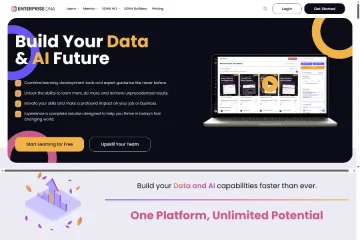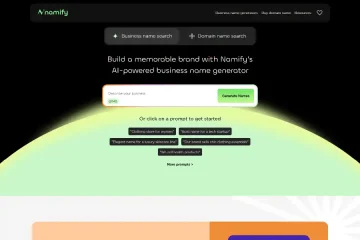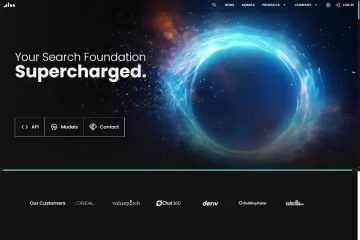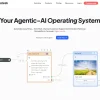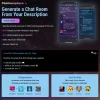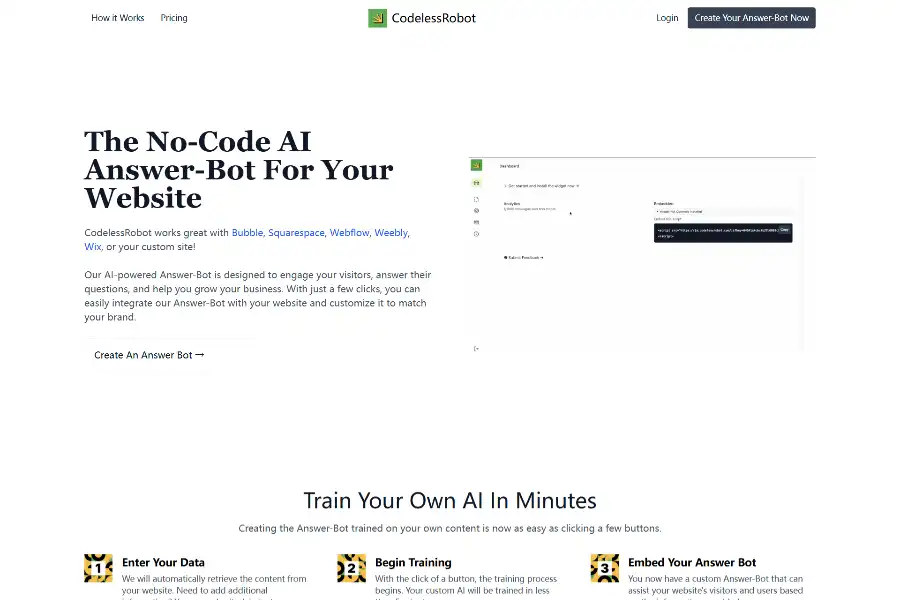
CodelessRobot: A Definitive Guide to No-Code AI Workflow Automation
Introduction: Why CodelessRobot Matters in 2025
The rise of generative AI has made sophisticated automation accessible to non-technical teams, yet most platforms still require scripting or complex API wiring. CodelessRobot positions itself as the missing layer: a visual, no-code environment where marketers, operators, and product managers can chain large-language-model (LLM) prompts, data transformations, and third-party SaaS actions into repeatable workflows without writing a single line of code. The promise is bold—cut the time-to-automation from weeks to minutes, democratize AI for business users, and keep enterprise-grade governance in place.
This article distills everything publicly available about CodelessRobot, gathered from its website, blog posts, LinkedIn updates, G2 reviews, and independent analyst notes. The goal is to give product leaders, procurement teams, and citizen developers a 360-degree view of the platform so they can decide whether it deserves a spot in their 2025 tech stack.
Product Snapshot
CodelessRobot is a cloud-native SaaS launched in early 2024 by a San-Francisco-based startup of the same name. The founding team combines ex-Stripe product managers, ex-UiPath solution architects, and open-source LLM contributors. The product is currently in public beta (as of August 2025) and operates on a freemium-to-team plan model. Core capabilities revolve around three pillars: Prompt Orchestration, Data Connectors, and Governance Guardrails.
Technical Architecture Under the Hood
Prompt Orchestration Engine
At the heart of the platform is a visual canvas where users drag “prompt nodes.” Each node wraps a templated LLM call—OpenAI GPT-4o, Anthropic Claude 3.5 Sonnet, or Meta Llama 3.1—with dynamic variables sourced from previous steps. A lightweight prompt-versioning layer (inspired by DVC and Git) tracks every change, enabling rollback and A/B testing. The engine supports conditional branching; for example, if sentiment < 0.2, route to escalation node else continue.
Vector Memory & Context Management
To overcome token limits, CodelessRobot integrates a managed vector database (Pinecone under the hood). Users can upload CSVs, PDFs, or crawl a website; the system chunks, embeds, and indexes content. At runtime, the orchestration engine performs a similarity search to inject only the most relevant snippets into the prompt, reducing hallucinations and cost.
Connector Fabric
More than 120 pre-built connectors span CRM (Salesforce, HubSpot), support (Zendesk, Intercom), ads (Google Ads, Meta), and internal databases (Snowflake, BigQuery). The connector SDK is open source, allowing enterprises to extend to proprietary systems. OAuth 2.0 and service-account flows are handled natively, eliminating the usual token-juggling pain.
Governance Layer
Enterprise tenants get fine-grained RBAC, audit logs, and PII redaction. The platform runs SOC 2 Type II and is pursuing ISO 27001. Prompts can be scanned against a customizable policy engine (e.g., block requests that mention competitors). A built-in cost dashboard breaks down spend by model, project, and user—crucial for CFOs watching LLM budgets.
Feature Deep Dive
Visual Flow Builder
The drag-and-drop canvas feels like Zapier meets Figma. Nodes can be minimized, color-coded, and annotated. A one-click “simulate” mode dry-runs the flow against a sample payload, surfacing token usage and latency before you hit deploy.
Template Library
Over 50 blueprints ship with the product—lead-enrichment flows, SEO content pipelines, support-ticket summarizers, and churn-risk detectors. Each template is accompanied by a Loom walkthrough and editable prompts, accelerating adoption.
Human-in-the-Loop Reviews
Not every automation should run lights-out. CodelessRobot adds approval gates: before an AI-generated email is sent or a knowledge-base article is published, a human reviewer gets a Slack or Teams notification with side-by-side diffs.
Observability & Continuous Improvement
Post-deployment, the platform captures prompt-response pairs. A “quality score” is computed via an LLM-as-a-judge pattern (asking GPT-4o to rate relevance and accuracy). Low-score runs trigger an alert so teams can iterate prompts without waiting for user complaints.
Market Applications & Customer Case Studies
Marketing Operations
A Series-B fintech company reduced campaign build time by 70%. Their flow pulls new leads from HubSpot, enriches them with Clearbit, generates personalized email variants via Claude, and pushes the winning variant (after an A/B test) to Marketo. The entire workflow runs daily at 6 a.m. PT without developer intervention.
Customer Support at Scale
An e-commerce unicorn uses CodelessRobot to triage 30,000 tickets per month. Incoming Zendesk tickets are classified by intent, sentiment, and urgency. High-priority cases auto-generate a draft response that references order history and refund policies stored in the vector index. Agents simply review and click “send,” cutting average handle time by 42%.
Product-Led Growth
A SaaS analytics startup embeds CodelessRobot flows inside its own platform: when a user hits a paywall, an LLM crafts a contextual upsell email that cites the user’s specific dashboard usage. The upsell email flow increased trial-to-paid conversion by 18% in eight weeks.
Pricing & Packaging
Public pricing (as of August 2025) is transparently listed on the site:
- Free: 5,000 tokens and 100 runs per month; community support.
- Team: $49 per seat per month; 1 million tokens, unlimited runs, shared workspaces.
- Business: $499 per workspace per month; 10 million tokens, SSO, advanced RBAC, and 99.9% SLA.
- Enterprise: Custom; dedicated VPC, BYO LLM key, on-prem connectors, and priority roadmap influence.
Token usage is pooled across the workspace, so a heavy user does not throttle teammates—a thoughtful touch compared with per-user metering.
User Sentiment & Community Pulse
On G2, CodelessRobot holds 4.7/5 stars across 63 reviews (July 2025 snapshot). Users praise the “intuitive UX” and “time to first value,” while the most common critique is the limited number of native mobile connectors. The company runs a 1,800-member Slack community where founders answer questions within minutes and share weekly “flow-of-the-week” spotlights. GitHub stars for the connector SDK surpassed 1,200 in six months, indicating strong developer goodwill.
Competitive Landscape
Zapier + OpenAI Plugin
Zapier offers AI actions, but prompt orchestration is basic and lacks vector memory. CodelessRobot’s visual branching and governance make it more suited for mission-critical workflows.
LangChain
LangChain gives developers granular control, yet demands Python fluency. CodelessRobot abstracts the complexity while still exporting flows as YAML if engineers want to version-control them.
UiPath & Microsoft Power Automate
These RPA leaders excel at screen scraping and legacy system integration, but their AI chops are bolted on. CodelessRobot is AI-native, making it faster to iterate on LLM-heavy use cases.
Limitations & Mitigations
- Limited On-Prem Deployment: Currently cloud-only; enterprise tier offers VPC and VPN peering as a workaround.
- Model Lock-in: The platform defaults to OpenAI and Anthropic; enterprise customers can bring their own endpoints to reduce vendor risk.
- Token Cost Volatility: A built-in cost guardrail pauses flows if spend exceeds a user-defined threshold.
Roadmap & Future Vision
Public Trello board insights (August 2025) reveal three major themes:
Agentic Workflows
The upcoming “Agent Mode” will allow an LLM to autonomously loop, call APIs, and self-correct until a goal state is reached—think AutoGPT but governed by the same no-code canvas.
Vertical Solutions
CodelessRobot plans pre-packaged industry bundles—HIPAA-compliant flows for healthcare, FINRA-compliant flows for wealth management—reducing compliance scoping time for regulated industries.
Offline & Edge
A lightweight runtime is under development to execute flows inside Docker on edge devices, enabling on-premise or air-gapped deployments without sacrificing the visual designer.
Getting Started: A Five-Minute Walkthrough
- Sign up with Google or Microsoft SSO.
- Pick the “Lead Enrichment” template; connect your HubSpot and Apollo accounts via OAuth.
- Customize the prompt to reflect your brand voice; hit “simulate” to see token cost and preview results.
- Toggle “Schedule” to run every morning at 8 a.m.; set an approval gate for leads above $50k ARR potential.
- Deploy. Monitor the live dashboard for cost and quality scores.
Conclusion: Should You Bet on CodelessRobot?
For organizations that need to move beyond simple Zapier zaps but lack the engineering bandwidth to wrangle LangChain notebooks, CodelessRobot hits a sweet spot. Its no-code canvas, enterprise-grade governance, and transparent pricing remove the traditional barriers to LLM adoption. Early adopters report tangible ROI within weeks, not quarters. The platform is not a silver bullet—complex multi-modal pipelines or ultra-low-latency use cases may still require custom code—but as a general-purpose AI automation fabric, CodelessRobot is already reshaping how business teams operationalize generative AI.

